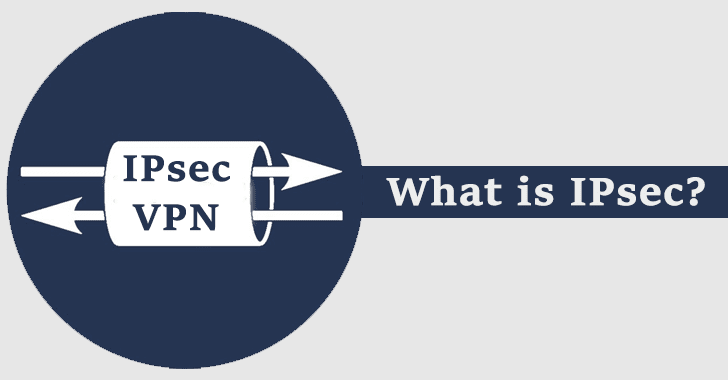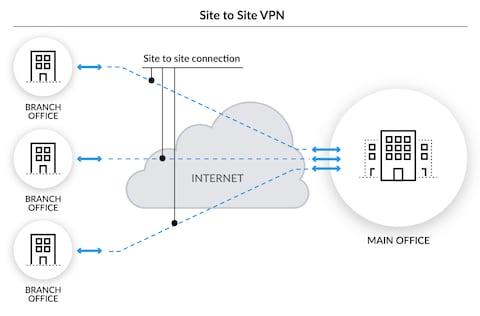Featured
Table of Contents
- – Ipsec Made Simple — What Is Ipsec?
- – How Does Ipsec Work With Ikev2 And Establish A...
- – Ipsec Explained: What It Is And How It Works
- – Ssl Vpn And Ipsec Vpn: How They Work
- – What Is Ipsec? - How Ipsec Work And Protocols...
- – What Is Ipsec And How Does It Work?
- – Ipsec (Internet Protocol Security) Vpn
Ipsec Made Simple — What Is Ipsec?
These settlements take 2 kinds, primary and aggressive. The host system that starts the procedure suggests file encryption and authentication algorithms and settlements continue until both systems choose the accepted procedures. The host system that begins the procedure proposes its favored encryption and authentication techniques but does not work out or change its choices.
As soon as the data has been moved or the session times out, the IPsec connection is closed. The private keys utilized for the transfer are deleted, and the procedure concerns an end. As shown above, IPsec is a collection of several functions and actions, similar to the OSI model and other networking structures.
IPsec utilizes two primary protocols to supply security services, the Authentication Header (AH) protocol and the Encapsulating Security Payload (ESP) procedure, together with several others. Not all of these procedures and algorithms need to be utilized the specific selection is determined during the Negotiations phase. The Authentication Header procedure validates data origin and stability and provides replay protection.
How Does Ipsec Work With Ikev2 And Establish A Secure ...
A trusted certificate authority (CA) provides digital certificates to confirm the interaction. This enables the host system receiving the data to confirm that the sender is who they declare to be. The Kerberos procedure offers a central authentication service, permitting devices that utilize it to verify each other. Different IPsec applications may use different authentication approaches, but the outcome is the exact same: the safe transference of data.
The transport and tunnel IPsec modes have numerous crucial distinctions. Encryption is only applied to the payload of the IP packet, with the initial IP header left in plain text. Transportation mode is primarily used to offer end-to-end communication in between two gadgets. Transportation mode is mainly used in situations where the two host systems interacting are relied on and have their own security treatments in place.
Encryption is applied to both the payload and the IP header, and a new IP header is added to the encrypted package. Tunnel mode supplies a safe and secure connection in between points, with the initial IP packet wrapped inside a brand-new IP package for extra security. Tunnel mode can be utilized in cases where endpoints are not relied on or are doing not have security systems.
Ipsec Explained: What It Is And How It Works
This suggests that users on both networks can engage as if they were in the very same area. Client-to-site VPNs permit private gadgets to link to a network from another location. With this option, a remote worker can operate on the exact same network as the rest of their group, even if they aren't in the same place.
It needs to be kept in mind that this approach is hardly ever used because it is hard to manage and scale. Whether you're using a site-to-site VPN or a remote gain access to VPN (client-to-site or client-to-client, for instance) most IPsec geographies come with both advantages and downsides. Let's take a closer take a look at the advantages and disadvantages of an IPsec VPN.
An IPSec VPN is versatile and can be configured for various use cases, like site-to-site, client-to-site, and client-to-client. This makes it a good choice for companies of all shapes and sizes.
Ssl Vpn And Ipsec Vpn: How They Work


IPsec and SSL VPNs have one main difference: the endpoint of each protocol. An IPsec VPN lets a user connect from another location to a network and all its applications. On the other hand, an SSL VPN develops tunnels to particular apps and systems on a network. This limits the methods which the SSL VPN can be utilized however reduces the probability of a compromised endpoint causing a wider network breach.
For mac, OS (by means of the App Store) and i, OS versions, Nord, VPN uses IKEv2/IPsec. This is a combination of the IPsec and Web Key Exchange version 2 (IKEv2) protocols.
Stay safe with the world's leading VPN.
What Is Ipsec? - How Ipsec Work And Protocols Used
Before we take a dive into the tech things, it is necessary to see that IPsec has rather a history. It is interlinked with the origins of the Web and is the outcome of efforts to develop IP-layer encryption techniques in the early 90s. As an open procedure backed by constant advancement, it has proved its qualities for many years and although challenger protocols such as Wireguard have emerged, IPsec keeps its position as the most extensively used VPN procedure together with Open, VPN.
Once the interaction is established, IPSEC SA channels for safe and secure information transfer are developed in phase 2. Attributes of this one-way IPsec VPN tunnel, such as which cipher, technique or key will be used, were pre-agreed by both hosts (in case of IPsec VPN, this is a connection in between a gateway and computer system).
IPsec VPNs are commonly utilized for several factors such as: High speed, Very strong ciphers, High speed of developing the connection, Broad adoption by running systems, routers and other network devices, Of course,. There are alternative choices out there such as Open, VPN, Wireguard and others (see the list of vital VPN protocols on our blog).
What Is Ipsec And How Does It Work?
When establishing an IKEv2 connection, IPsec uses UDP/500 and UDP/4500 ports by default. By basic, the connection is established on UDP/500, but if it appears during the IKE facility that the source/destination lags the NAT, the port is switched to UDP/4500 (for information about a strategy called port forwarding, examine the article VPN Port Forwarding: Excellent or Bad?).
The purpose of HTTPS is to secure the content of interaction in between the sender and recipient. This guarantees that anyone who wants to intercept interaction will not be able to find usernames, passwords, banking details, or other sensitive information.
IPsec VPN works on a different network layer than SSL VPN. IPsec VPN runs on the network layer (L3) while SSL VPN operates on the application layer.
Ipsec (Internet Protocol Security) Vpn

When security is the main issue, contemporary cloud IPsec VPN need to be chosen over SSL since it encrypts all traffic from the host to the application/network/cloud. SSL VPN protects traffic from the web internet browser to the web server only. IPsec VPN secures any traffic in between two points determined by IP addresses.
The problem of selecting in between IPsec VPN vs SSL VPN is closely associated to the topic "Do You Need a VPN When The Majority Of Online Traffic Is Encrypted?" which we have actually covered in our current blog. Some might think that VPNs are hardly essential with the rise of built-in encryption straight in e-mail, internet browsers, applications and cloud storage.
Table of Contents
- – Ipsec Made Simple — What Is Ipsec?
- – How Does Ipsec Work With Ikev2 And Establish A...
- – Ipsec Explained: What It Is And How It Works
- – Ssl Vpn And Ipsec Vpn: How They Work
- – What Is Ipsec? - How Ipsec Work And Protocols...
- – What Is Ipsec And How Does It Work?
- – Ipsec (Internet Protocol Security) Vpn
Latest Posts
The 5 Best Vpn Services For The Bay Area
Which Vpn Is Best For My Business?
Best Free Vpn For Business In 2023
More
Latest Posts
The 5 Best Vpn Services For The Bay Area
Which Vpn Is Best For My Business?
Best Free Vpn For Business In 2023